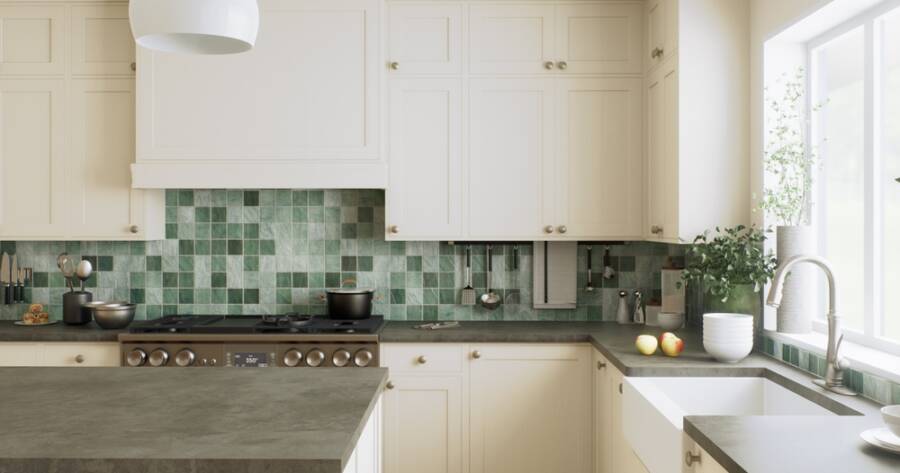Choosing the right kitchen backsplash is about more than protecting your walls from splashes and spills, it’s also a design opportunity to bring style, color, and personality into one of the most-used spaces in your home. The right backsplash can tie your kitchen together, complement your cabinetry and countertops, and serve as a visual focal point. Whether you’re remodeling your entire kitchen or just making a small upgrade, understand how to choose the perfect backsplash for your space.
1. Consider Your Kitchen’s Style
Before you start shopping for tiles or patterns, think about the overall style of your kitchen. Is it modern, rustic, traditional, farmhouse, or eclectic? Your backsplash should enhance the existing design, not clash with it.
- Modern kitchens often pair well with sleek, minimalist backsplashes like glass, stainless steel, or large-format tiles.
- Farmhouse kitchens benefit from subway tiles or handcrafted ceramic tiles in soft, neutral tones.
- Traditional kitchens might lean toward mosaic patterns or classic stone finishes.
- Eclectic spaces can handle bold colors, playful patterns, or mixed materials.
Let your kitchen’s existing vibe guide your choices for a cohesive look.
2. Choose the Right Material
There are many materials to choose from for your backsplash, each with its own benefits:
- Ceramic or porcelain tile: Durable, affordable, and available in countless styles.
- Glass tile: Reflects light and adds a modern shine; easy to clean but can be more fragile.
- Natural stone (like marble or granite): Elegant and timeless, though it may require sealing and more upkeep.
- Metal (like stainless steel or copper): Great for modern or industrial kitchens; easy to clean and heat-resistant.
- Peel-and-stick or vinyl: Budget-friendly and ideal for DIYers or renters looking for a temporary update.
Think about maintenance, cost, and how the material fits with your lifestyle before making a decision.
3. Coordinate With Countertops and Cabinets
Your backsplash doesn’t have to match your countertops and cabinets exactly, but it should complement them. If your countertops are bold or heavily patterned, a simple, understated backsplash can create balance. If your counters and cabinets are neutral, you can use the backsplash to introduce color or pattern.
For a seamless look, take samples of your countertop and cabinet finishes with you when shopping for tile. This will help ensure everything works together harmoniously.
4. Pick a Color Scheme
The backsplash is a great place to add color to your kitchen, but it’s important to do it thoughtfully. Consider using colors that are already found in other parts of the room like accent décor, wall paint, or bar stools—to create visual continuity.
If you’re hesitant about bright colors, you can still make a statement using texture, shape, or layout. For example, arranging white tiles in a herringbone or chevron pattern can add interest without overwhelming the space.
5. Decide on Height and Coverage
Traditionally, backsplashes cover the space between the countertop and upper cabinets. However, many homeowners are now extending them all the way to the ceiling, especially behind stovetops or sinks for added drama.
If you have open shelves instead of upper cabinets, running the backsplash to the ceiling can create a clean, finished look. On a tighter budget? Focus on key areas, like behind the stove or sink, to create a focal point without covering every wall.
6. Think About Grout Color and Maintenance
Grout may seem like a minor detail, but it can significantly impact the overall look of your backsplash. A contrasting grout can highlight the tile pattern, while a matching grout creates a more seamless appearance. Darker grout hides stains better, while lighter grout can brighten the space.
Always consider maintenance, smooth tiles and stain-resistant grout will make cleaning up kitchen messes much easier.
Mix Function with Style
Your backsplash should work hard and look good doing it. With so many materials, colors, and styles to choose from, there’s no shortage of ways to personalize your kitchen. Whether you opt for timeless subway tile, luxurious marble, or a bold mosaic, the perfect backsplash will elevate your kitchen’s aesthetic and functionality.

